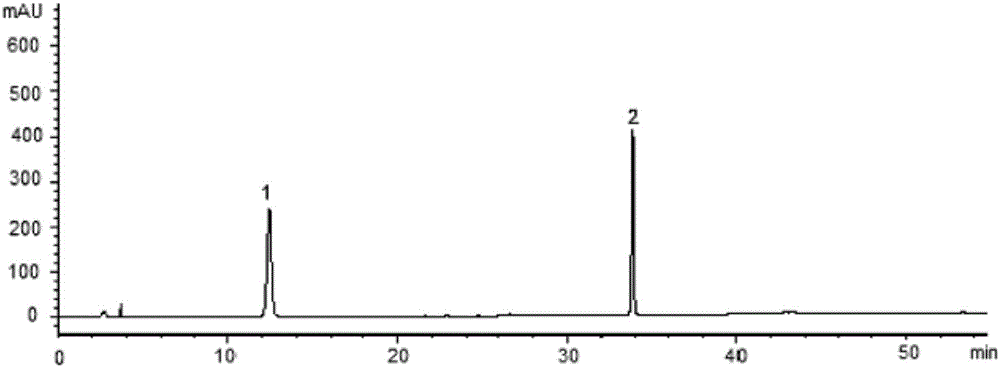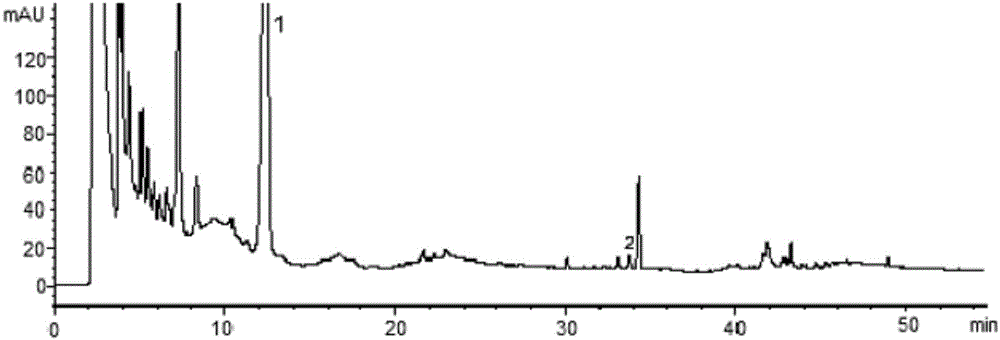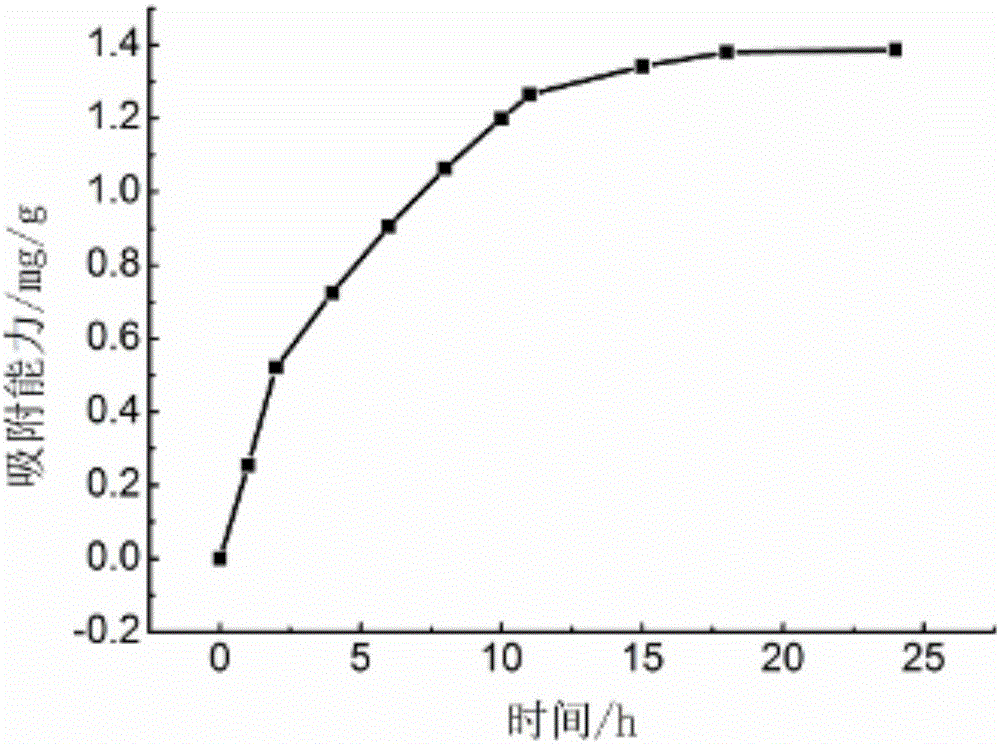Method for separating lobetyolin and atractylolide III in radix codonopsis
A technology of tangshenoside and atractylolide, which is applied in chemical instruments and methods, preparation of sugar derivatives, sugar derivatives, etc., can solve the problems of rare separation and purification, and achieve the effect of high antioxidant activity and simple process operation
- Summary
- Abstract
- Description
- Claims
- Application Information
AI Technical Summary
Problems solved by technology
Method used
Image
Examples
preparation example Construction
[0039] Preparation of the test solution
[0040] Accurately weigh 5.0g of Codonopsis pilosula extract powder, dissolve in methanol, filter with suction, put the filtrate in an evaporating dish, and evaporate to dryness, dissolve the residue in methanol and dilute it to a 25mL volumetric flask, filter it with a 0.45μm microporous membrane, and take Filtrate, that is.
[0041] Preparation of reference solution
[0042] Accurately weigh 2.02 mg of tangshenoside reference substance and 1.51 mg of atractylolide III reference substance, put them in a 10 mL volumetric flask, dissolve them in methanol and set the volume to the mark, shake well to obtain mixed reference substance 1. Draw 1mL of mixed reference substance 1, place it in a 100mL volumetric flask, dilute to the mark with methanol, and shake well to obtain mixed reference substance 2. Control substance 2 was detected at a wavelength of 220nm.
Embodiment 1
[0043] The contrast of embodiment 1 resin
[0044] Take Codonopsis pilosula, add 95% ethanol for leaching, and extract twice. The amount of alcohol added in the first and second times is 5 times the weight of the medicinal material. The extraction time is 1 hour each time, and the extraction temperature is 95~ Combine the extracts at 98°C, concentrate under reduced pressure until the volume is 50% of the volume of the original extract, and use it as Codonopsis pilosula extract.
[0045] Weigh 2.0g each of H103, DM130, DM301, and S-8 macroporous resins with different polarities. After activation, add 30mL of the above-mentioned Codonopsis pilosula extract, shake until fully absorbed, filter, and measure the residual amount in the filtrate. For the concentration of tangshenoside and atractylolide III, the following formula is used to calculate the adsorption amount and adsorption rate of each resin to tangshenoside and atractylolide III; each resin saturated with adsorption is d...
Embodiment 2
[0055] Example 2 Static adsorption investigation
[0056] Using the same raw materials as in Example 1, weigh 2.0 g of DM130 macroporous resin, add 30 mL of the Codonopsis pilosula extract of Example 1 after activation, and place it on a shaking table to shake and absorb, and then absorb at 0,0.5,1,1.5,2,3 , 4, 5, 6, 7, 8, 9, 10, 11 and 24h, draw 1mL of the supernatant, calculate the adsorption amount of tangshenoside and atractyllide III by the resin within the time t, and draw the static adsorption kinetic curve ,See image 3 , Figure 4 . As shown in the figure, the adsorption rate of DM130 macroporous adsorption resin to the static adsorption of tangshenoside and atractylolide III in Codonopsis pilosula increased rapidly within 10 hours, and reached the adsorption equilibrium after 15 hours.
PUM
| Property | Measurement | Unit |
|---|---|---|
| Saturated adsorption capacity | aaaaa | aaaaa |
| Saturated adsorption capacity | aaaaa | aaaaa |
Abstract
Description
Claims
Application Information
 Login to View More
Login to View More - R&D
- Intellectual Property
- Life Sciences
- Materials
- Tech Scout
- Unparalleled Data Quality
- Higher Quality Content
- 60% Fewer Hallucinations
Browse by: Latest US Patents, China's latest patents, Technical Efficacy Thesaurus, Application Domain, Technology Topic, Popular Technical Reports.
© 2025 PatSnap. All rights reserved.Legal|Privacy policy|Modern Slavery Act Transparency Statement|Sitemap|About US| Contact US: help@patsnap.com



